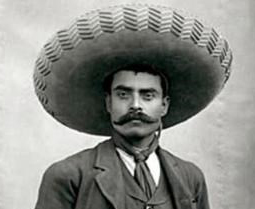When thinking about a conclusion and ways to wrap up the class, I felt that the concept of a conclusion is very similar to our definition of a revolution. Throughout the class, we have discussed how to classify a revolution on whether or not it was successful the list goes on. But what I have come to realize is that our understanding of what revolutions are and how they function remain the same, although now we understand the different type of revolutions and whether or not something can be classified as one. Even our understanding of what could be a revolutionary text has changed, we have examples like Guerrilla Warfare which is a direct example of how revolutions can start and then we have Cartuchos which in itself is not a revolutionary text but depicts the Mexican Revolution like no other text does. Even though our definition hasn’t changed since the first day that we had class, the way that we look at texts and revolution has.
Even though our understanding of revolutions hasn’t changed our view is constantly changing as we learn more about each individual revolution throughout the class. Although we haven’t changed much throughout the class I still feel that we have grown in understanding how revolutions can work and how they can also fail. This concept of succeeding and failing is one which we initially discussed at the start of class was something that we all had a great amount of debate on, yet even now our understanding of success is ever changing. We see that in The Country Under My Skin, Belli goes into detail about how even though her revolution was a success she feels that the matter which it was handled was unsuccessful. Even through her eyes, the concept of success is mixed, success can be attributed to a wide variety of things all based on one’s own perspective.
Overall I feel that throughout this class we have been so many opportunities to express our own ideas and learn about the ideas of others, it is these opportunities which furthered our understanding of what a revolution truly is. Even though we may not have changed, just seeing and understanding different points of views is equally as important. The question of whether a revolution is successful or if it can be classified as one may never be answered, but these aren’t the questions that truly need answers. We didn’t learn to answer questions like these in class, but instead learned to ask more question and find out what other people think of those questions, we have learned more by asking than answering.
